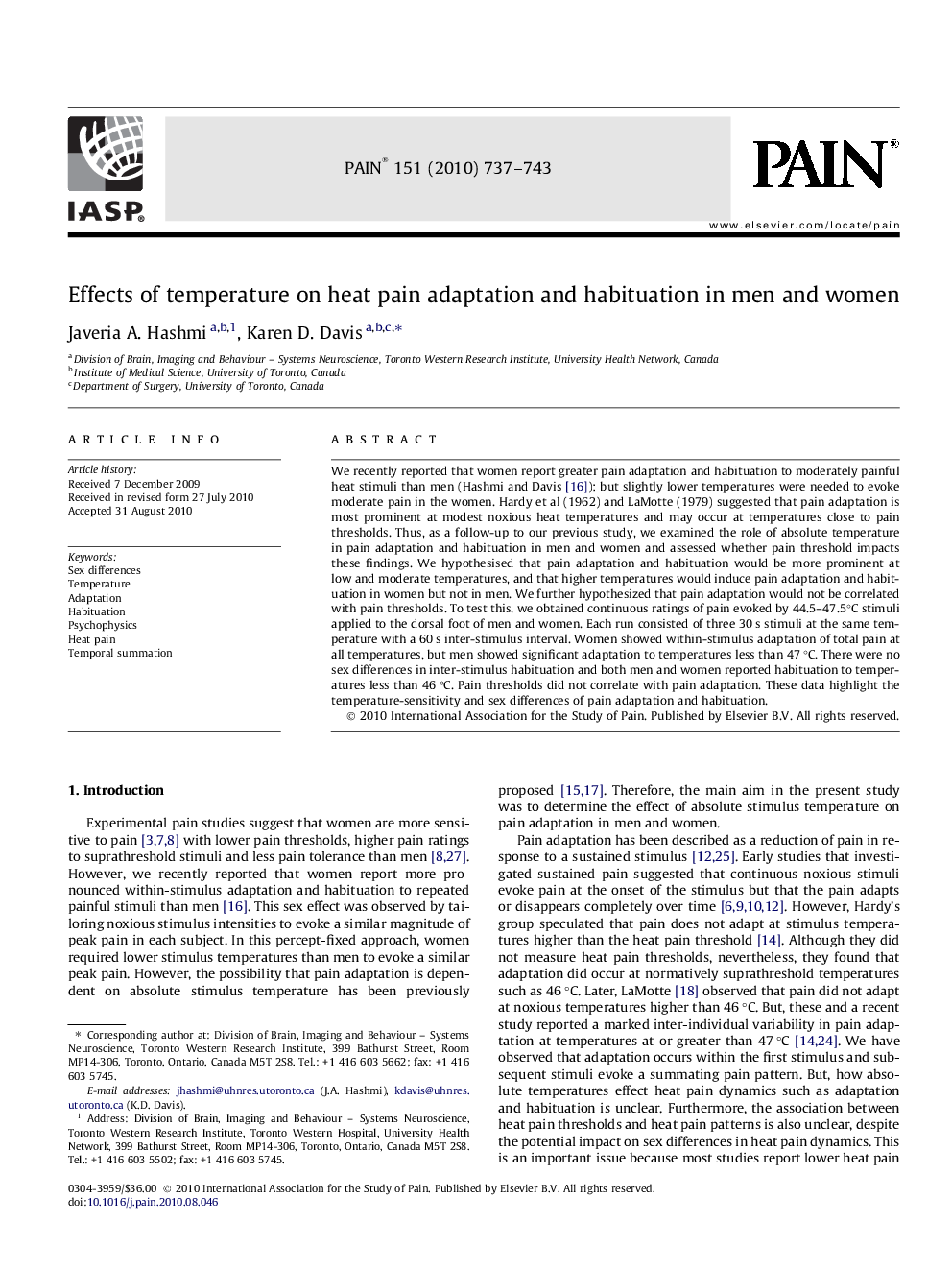| کد مقاله | کد نشریه | سال انتشار | مقاله انگلیسی | نسخه تمام متن |
|---|---|---|---|---|
| 10451063 | 918386 | 2010 | 7 صفحه PDF | دانلود رایگان |
عنوان انگلیسی مقاله ISI
Effects of temperature on heat pain adaptation and habituation in men and women
دانلود مقاله + سفارش ترجمه
دانلود مقاله ISI انگلیسی
رایگان برای ایرانیان
کلمات کلیدی
موضوعات مرتبط
علوم زیستی و بیوفناوری
علم عصب شناسی
علوم اعصاب سلولی و مولکولی
پیش نمایش صفحه اول مقاله

چکیده انگلیسی
We recently reported that women report greater pain adaptation and habituation to moderately painful heat stimuli than men (Hashmi and Davis [16]); but slightly lower temperatures were needed to evoke moderate pain in the women. Hardy et al (1962) and LaMotte (1979) suggested that pain adaptation is most prominent at modest noxious heat temperatures and may occur at temperatures close to pain thresholds. Thus, as a follow-up to our previous study, we examined the role of absolute temperature in pain adaptation and habituation in men and women and assessed whether pain threshold impacts these findings. We hypothesised that pain adaptation and habituation would be more prominent at low and moderate temperatures, and that higher temperatures would induce pain adaptation and habituation in women but not in men. We further hypothesized that pain adaptation would not be correlated with pain thresholds. To test this, we obtained continuous ratings of pain evoked by 44.5-47.5°C stimuli applied to the dorsal foot of men and women. Each run consisted of three 30 s stimuli at the same temperature with a 60 s inter-stimulus interval. Women showed within-stimulus adaptation of total pain at all temperatures, but men showed significant adaptation to temperatures less than 47 °C. There were no sex differences in inter-stimulus habituation and both men and women reported habituation to temperatures less than 46 °C. Pain thresholds did not correlate with pain adaptation. These data highlight the temperature-sensitivity and sex differences of pain adaptation and habituation.
ناشر
Database: Elsevier - ScienceDirect (ساینس دایرکت)
Journal: PAIN® - Volume 151, Issue 3, December 2010, Pages 737-743
Journal: PAIN® - Volume 151, Issue 3, December 2010, Pages 737-743
نویسندگان
Javeria A. Hashmi, Karen D. Davis,